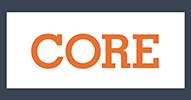Last week, we talked about setting up email. Conventional wisdom in the Internet age is that you need a website to drive your business. What we have found is actually the contrary; a website can actually put a halt on your business’s growth. We’ve all Googled ourselves out of curiosity, but what about after you meet someone at a networking event, or exchange emails? You can guarantee your new acquaintance has Googled you as well. If you have no website, they will only find your LinkedIn profile and other references that you probably do not have any control over.
We work mostly with solopreuneurs in our practice, and most people that start businesses are in that category at least in the beginning. The first thing that solopreuneurs need to remember is that you are now “the brand” or “product”. Not what you sell, but you. When Tiger Woods turned pro, his father Earle told him that he was a product now, something that Tiger and folks like A-Rod have learned the hard way. Keep that in mind when you are considering ranting on Facebook.
So before you even start to craft your website, it is useful to complete a personal branding exercise. We start our clients with this, and then follow that up with a core values index. Our image and our core values are both vital in setting our personal brand.
For example, green is a color that we have used initially for onCOREventures. Green is the color of the heart chakra, the fourth and most core of the chakras. It is the color of sustainability and the color of “start” or “go.” Thus, green is core to our business, because these items are core to us. We have used and will continue to use my photography as the promotion of our site, because vision is important to our clients, and my vision is often expressed in my imagery. I augment this however with viable stock photography that conveys the messages.
When I started my coaching practice, I did not have the name chosen so I simply set up frederickgeiger.com and put up a four-page site. Home, what I do, who I am, and a blog. That way, anyone that looked for information about me would find that site. I went into a 1:1 networking meeting only to find someone looking at my photography site at fredgeiger.com.
For my coaching practice, I had a colleague build a quick site in Dreamweaver, which was overkill, but I already had a hosting contract in place, and I knew how to setup a website myself. Since I already had set up a WordPress site for our church, adding the blog was trivial – for me.
If you have nothing of the sort in place, and if you already completed what we talked about last week, and used Google to set up your email, then it is a simple process to launch your website on Google as well..
From the sites section of Google, first choose “Create a Site.” You can then see that there are a variety of templates that can be used, and you can work on your site before it is published and made public. Once you are satisfied with it, you can then point your domain name to it. If that is your personal name, you can always redirect people to your new site, or not. Currently, I still have my old personal photography site active at fredgeiger.com, and I have redirected frederickgeiger.com to my current site.
There are many other ways of setting up a site, some very affordable and some very costly. But if you are hanging out your shingle and do not have a live website, do not be surprised if you are not always taken seriously.
You can also create other sites to experiment with different ideas – or use as a private intranet for your associates or contractors as you grow your company. Tools such as Google Drive make it easy to store files and access them online from any web browser.
The most difficult part of any process is setting yourself in motion. Do not let the fear of taking that first plunge stop you from having your own site. Setting up your own site that emits your core message to potential clients is a quick, very uncomplicated task. This also means that you don’t have to empty your wallet on creating a website for a business that does not have a definite direction yet. The one thing that I have learned in my many years of working with startups of all sizes is that the worst decision is actually the decision not made. Make decisions that complement your core values, and then take action. Ready, set, go.
